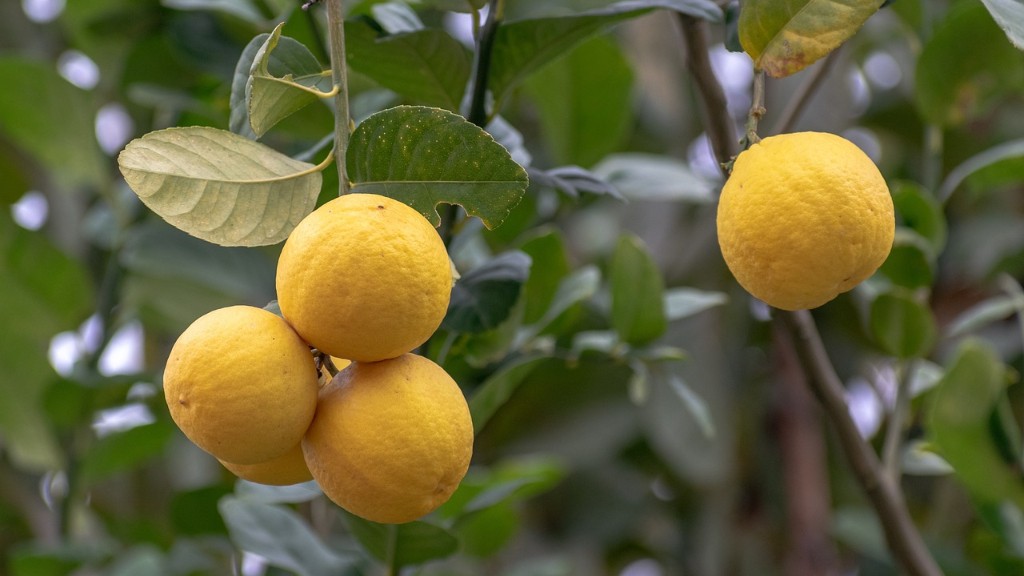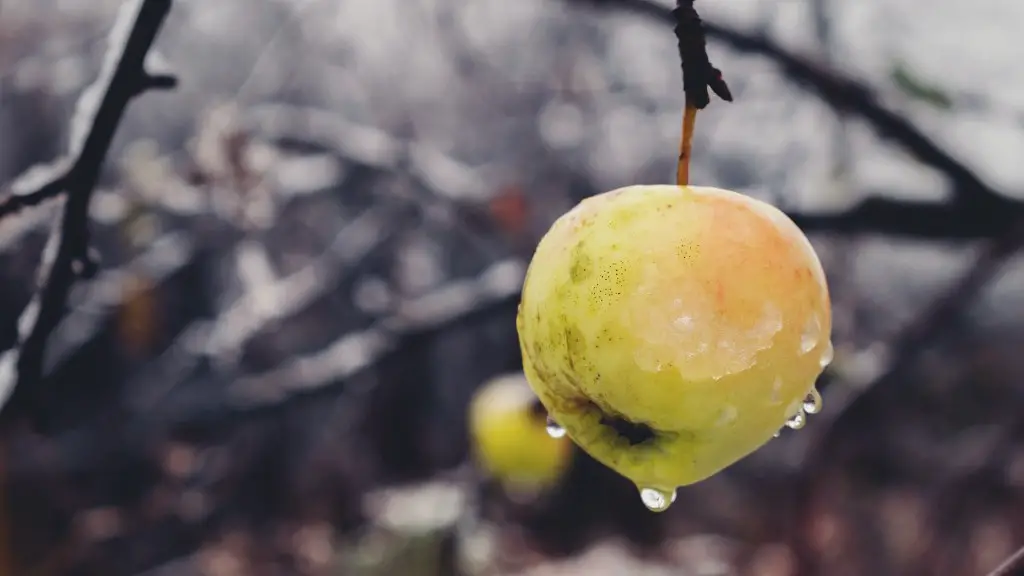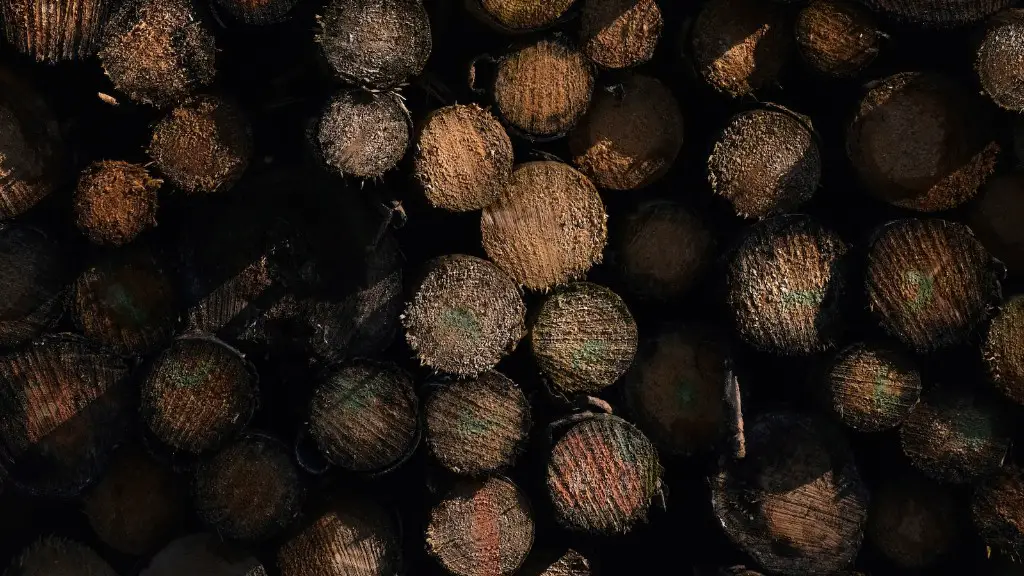Lemon trees are a great addition to any garden for both a burst of fragrant and attrative foliage, as well as their wonderful fruit. While many gardeners may rush to buy a pre-grown lemon tree to bring the garden to life faster, growing a lemon tree from seed can be both a cost-effective and rewarding endeavour. With the right care and knowledge, you can enjoy your own lemon bounty within just a couple of years.
Lemon trees take a relatively short amount of time to mature, compared to other fruit bearing trees. Generally, it can take anywhere between two to five years depending on the variety. The time it takes for a lemon tree to produce its first fruit can vary significantly depending on a number of factors, such as climate, sufficient light and soil conditions.
Germination of a lemon tree seed can occur indoors or outdoors, and Growers should be aware that not all seeds will produce a viable tree. It’s advised to purchase your seeds from a reputable source, as there is no guarantee that store-bought lemons will contain viable seeds.
Growing your lemon tree from seed is relatively straightforward and requires some patience. The process begins with a casual soak, followed by the seeds being planted in a pot – which should ideally be filled with a potting mix higher in organic matter. The pot provides ease of movement for when it’s time for the tree to be transplanted outside, and enables a more substantial root system to form.
Optimally, the temperature and humidity should be slightly higher than normal to help the seed germinate and the soil should also have adequate drainage. Once the seed has germinated, make sure to provide a full spectrum light source, as these plants require a healthy amount of light to mature and bear fruit.
For best results, a lemon tree should be watered consistently and not get too much direct sunlight; which can often be too intense during midday. The soil should also be well-drained and have hydration levels that remain consistent; thus, be sure to check it about once a week.
In conclusion, a lemon tree can take anywhere from two to five years to mature and bear fruit from seed, however there is no definitive timeline as a lot of this is based on climate and other external factors. With adequate care and attention, you can enjoy your own lemon bounty in your garden within the next couple of years.
Fertilizing the Lemon Tree
Fertilizer is an important component for sustaining a good level of growth for any fruit tree. Along with light and water, an appropriate fertilizer mix can supply the necessary nutrients to the root system and foliage, in order to help it grow strong and healthy. When it comes to lemon trees, growers need to be aware that they are prone to certain nutrient deficiencies and fertilizers should be tailored to best address these issues.
Fertilizers that are higher in nitrogen are the most recommended, as they can help in preventing yellowing leaves and can even increase the size of the fruit that the tree produces. Providing organic fertilizers like compost and organic fertilizers are usually the best, as they can provide the tree with the right types of nutrient for sustainable growth. It is worth noting that lemon trees also need micro-nutrients like zinc, magnesium, sulfur, and iron – so be sure to seek out an appropriate fertilizer mix that contains these elements.
When spreading out fertilizer, be sure to cover the soil evenly in a thin layer – and for best results, it should be spread at least twice a year. Whenever transplanting a lemon tree, the current soil should be replaced with a fresh potting mix, higher in organic matter and the first fertilizing session should follow a week afterwards.
Harvesting Lemons
When it comes to harvesting lemons, it’s important to remember that lemons need to remain on the tree until they reach their ripe state. As a rule of thumb, lemons are usually ripe when they become deep yellow and produce a strong fragrance. Grocery store lemons may not necessarily give the same sweet flavour and it usually pays off to wait until the tree produces its own lemons.
For best results, lemons should be picked when they become symmetrical and the fruit has developed to a good size. To remove them from the tree, grip the stem with fingers and gently twist until the lemon is detached. If necessary, use a pair of scissors or pruning shears for larger fruits. To store them for a longer period of time, keep the lemons indoors in a cool and dry place and away from direct sunlight.
Pruning
Pruning is an invaluable process when it comes to sustaining strong, healthy and productive lemon trees. Pruning helps in removing dead wood, allowing for new growth, as well as helps in maintaining the overall shape of the tree. A productive lemon tree should have an aesthetically pleasing shape that, when unpruned, can suffer from overcrowding.
When pruning, always use a sterile pair of pruning shears and cut just above the bud. pruning should generally take place in the winter, as this is when the tree is dormant and the removed branches can be put to better use as firewood and compost. Moreover, it’s also important to remember to always prune away from any water-bearing branches, as this may affect the health of the whole tree.
Pest Control
It’s important to keep lemon trees protected from any pest infestation, as they can cause severe damage to crop yield and maybe even the health of the tree. There are a variety of pests which can cause varying types of damage and the most common ones include aphid, earwigs, red spider mites, scale insects, whitefly and mealybugs.
To prevent pests, it’s important to provide good general care to the tree, such as in terms of adequate drainage and sufficient sunlight. Pest control measures don’t have to be complex, as growers should be able to spot most of the common pests early on and treat them with home-made treatments – such as using soapy water to treat aphid infestations. These may often require multiple treatments across the growing season and it’s advised to seek out more specific advice depending on the severity of the infestation.
Disease Control
Lemon trees are also prone to a variety of diseases, both fungal and bacterial in origin. As with pest prevention prevention is key, however if the tree does contract a disease, it’s best to identify it early on and treat it quickly. The most common lemon tree diseases are root rot, powdery mildew, scab and brown spot.
To prevent the occurrence of these diseases, controlling the humidity levels and maintaining good drainage – as well as sufficiently managing pests – can prove extremely effective. Moreover, it’s important to remember to inspect the tree on a regular basis, as spotting early signs of disease is the key to treating it quickly and with minimal potential damage.
Transplanting
Transplanting is the process of moving a tree from a pot to a more permanent location – such as a garden. Transplanting should generally take place in the winter months, as this is the period in which the tree is dormant. Before transplanting, wait for a cold spell and the first few rains should result in a good level of saturation for the soil, helping in the absorption of the new nutrients.
Adequate planning for the new location should also be done, since the lemon tree may need to be in a sunnier and wind-sheltered area, as well as having good drainage. To transplant the tree, dig a large, wide and deep enough hole – allowing extra space for the root system. Carefully remove the tree from its pot and place into the new soil, back-filling with the extracted soil. it’s also worth noting that soil amendments or mulch can be helpful in protecting the tree from any potential extreme temperature fluctuations.




